Keith Gervasi
Reviews By Author

|
PZL.23 KARAŚ IIPublished:
This book is a compilation of 4-view color profiles, scale plans and photographic details of the PZL.23 Karaś II featuring scale plans in 1/72 and 1/48 scales plus drawings from wartime technical manuals and also photographs of the details. Book is available in the two marking variants
The book: The MMP ‘Single’ book series are short but very well-done books on the subject they cover. This book covering the PZL. 23B has just 24 pages but they are full of nice interior & exterior detail pictures (over 50), 1/72 & 1/48 line drawings and a 1/48 color profile. As I have picked up the nice IBG Models 1/72 PZL.23 kit this… more |

|
Dornier Do 217J-1/J-2Published:
HistoryThe Dornier Do 217 was a German multi-purpose bomber in WWII and was developed as a replacement for the Dornier Do 17. It was produced from November 1940 to May 1944. The Dornier 217J was the night fighter variant with BMW 801 engines, powerful armament and radar (on the J-2). In total, in 1942-43, there were produced 364 Do 217 night fighter of different modifications. They were in service with several night fighter regiments. The KitUpon opening a large & sturdy box you are presented with a whole lot of plastic! 8 runners & 3 main wing pieces of grey injected plastic and 1 clear runner and a 24-page instruction book and a very nice decal sheet. The plastic cleanly molded with very little flash and crisp detail and the clear parts are thin… more |
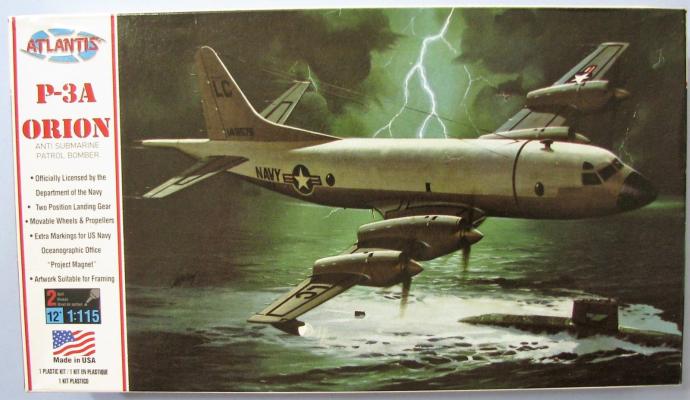
|
P-3A OrionPublished:
HistoryThe P-3 Orion was designed for use by the US Navy as a submarine hunter and replaced the Neptune. The P-3 was nearly twice as fast as the Neptune and its range increased by almost 60% over that of the P2V. The first Orion was delivered to the US Navy Squadron VP-8 in July 1962 and within six months this unit was fully equipped with P-3's. This kit is a reissue of the old Revell kit that was first released in 1965. What’s in the BoxUpon opening the box you will find a lot of white plastic, 48 pieces, attached to parts of sprues. The detail is raised and there are many rivets, also there is a lot of flash, pin marks and some sink marks to boot. (Face it, some of us that are this old OR OLDER have some of these same issues!) The decal sheet is printed… more |
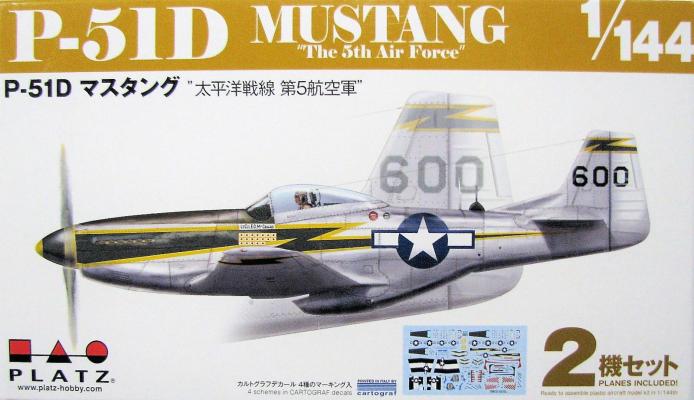
|
P-51D Mustang "The 5th Air Force"Published:
History: The North American Aviation P-51 Mustang is an American long-range, single-seat fighter and fighter-bomber used during World War II and was originally developed in remarkable time of 102 days in response to a request from British Purchasing Commission. The first P-51s with Allison engines were not able to show stunned high performance. By replacing Allison Engines with Rolls-Royce Merlin Engines, P-51 became a high-performance aircraft and evolved into long-range bomber escort in European War and was rival for Japan Army in Pacific War. D-version of P-51s were produced in larger numbers than any other Mustang variants. The P-51D featured a bubble canopy for all-around visibility and was armed with six wing-mounted 12.7mm caliber machine guns. Wing racks allowed the carriage of… more |
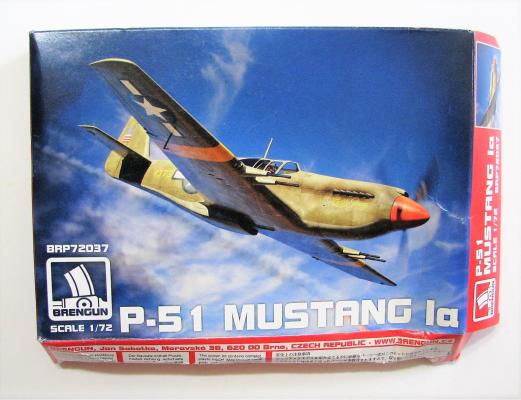
|
P-51 Mustang 1aPublished:
What’s in the BoxUpon opening the box you should find a bag containing 2 sprues of grey, one sprue of tan and a sprue of clear plastic. Also included are a resin piece, decals and a two-page instruction fold out. The plastic looks cleanly molded but has some thick mold seam lines. The clear parts are clean & clear, and the resin intake is molded nicely. The decals are printed cleanly and in register. ConstructionFor a kit with few parts this has a good bit of detail, especially in the pit. I will go through the basic construction of the kit itself even though I add the Brengun photo etch set for this review. The cockpit is made up of 10 parts with some nice detail molded in the sidewalls. Test fitting is a must for this kit as there are heavy mold seam… more |
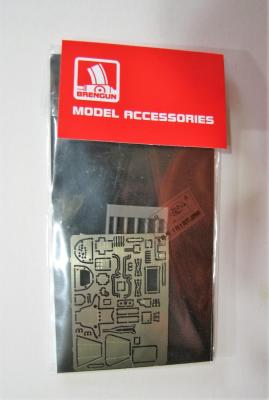
|
P-51 Mustang 1a Accessories.Published:
Brengun has produced an accessory set for their P-51 1a kit. What’s in the PackageThis set contains a photo etch fret, clear acetate sheet with the instrument panel dials, 5 resin gun barrels and a single page instruction sheet. Upon inspection I noticed that a couple areas of the etched parts were not fully etched and that bending these would be not quite as easy as normal. The acetate sheet with the dials looked very nice but the gun barrels had a small problem…..two were warped. ConstructionIt’s fair to say that most of this set deals with the cockpit, which is interesting in one respect, the kit has a one-piece closed canopy! Some minor “reducing” of some raised detail is required for the side walls but nothing real difficult. The control panel… more |
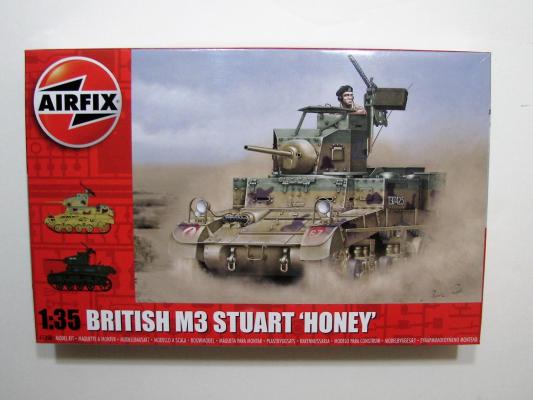
|
British M3 Stuart HomeyPublished:
HistoryFrom the Airfix kit: The British named the M3 "General Stuart" upon receipt of the tank under the Lend-Lease program in June of 1941. The tank's ability to "shoot and scoot" as well as keeping the crew safe from small fire arms fire, earned an affectionate nickname of "Honey" by its operators. The British cavalry men liked this tank as it could travel 10 to 20 mph faster than their own or enemy tanks, and for its ease of maintenance. The M3s were designed to replace the outdated M2s. The M3 incorporated a thicker armor, lengthened hull, and a trailer idler wheel to act as another road wheel to decrease ground pressure and improve weight distribution. The M3 turret had three pistol ports and shortened recoil mechanism. It was also equipped with a 37mm M6 gun,… more |
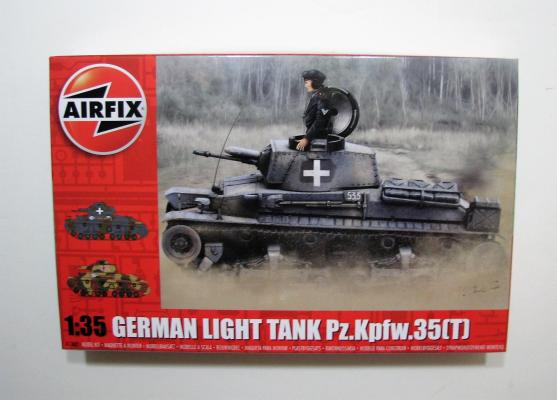
|
German Light Tank Pz.Kpfw.35(T)Published:
HistoryThe Panzerkampfwagen 35(t), commonly shortened to Panzer 35(t) or abbreviated as Pz.Kpfw. 35(t), was a Czechoslovakian designed light tank used mainly by Nazi Germany during World War II. The letter (t) stood for tschechisch (German: "Czech"). In Czechoslovakian service it had the formal designation Lehký tank vzor 35 (Light Tank Model 35) but was commonly referred to as the LT vz. 35 or LT-35. A total of 434 were built; of these, the Germans seized 244 when they occupied Bohemia-Moravia in March 1939 and the Slovaks acquired 52 when they declared independence from Czechoslovakia at the same time. Others were exported to Bulgaria and Romania. In German service, it saw combat during the early years of World War II, notably the invasion of Poland, the Battle of… more |
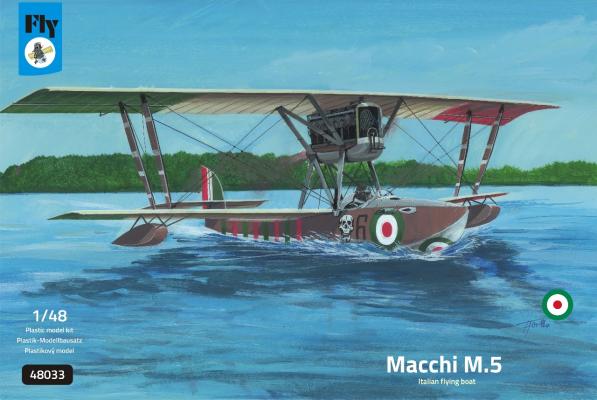
|
Macchi M.5Published:
HistoryThe Macchi M.5 was a flying-boat fighter developed by the Nieuport Macchi company of Varese in early 1917 and introduced in service in autumn 1917. Initially armed with a single Fiat machine-gun, and featuring a tail structure held on struts, the production M.5 had an armament of two Vickers guns and a tail structure resting on the fuselage. It was an extremely fast and maneuverable airplane, that managed to gain an ascendancy over the enemy seaplane fighters and even claimed victories against the Phönix land fighters. The KitUpon opening the box you will find a bag containing 2 sprues of tan-colored injected plastic, a clear piece, a small bag of resin parts, a two-sided instruction page and a sheet of decals. The plastic is molded well and has no… more |

|
HMS IllustriousPublished:
HistoryThe Illustrious class was a class of aircraft carrier of the Royal Navy that included some of the most important British warships in World War II. The 1st ship in this class was HM Illustrious. She was laid down on 27th April 1937, launched on 5th April 1939 and commissioned on 25th May 1940. The Illustrious class relied on their anti-aircraft armament and the passive defense provided by an armored flight deck for survival. In the Illustrious class, armor was carried at the flight deck level and formed an armored box-like hangar that was an integral part of the ship's structure. This armor scheme was designed to withstand 1,000-pound bombs. The flight deck had an armored thickness of 3 inches. The KitUpon opening the box you will find 13… more |
